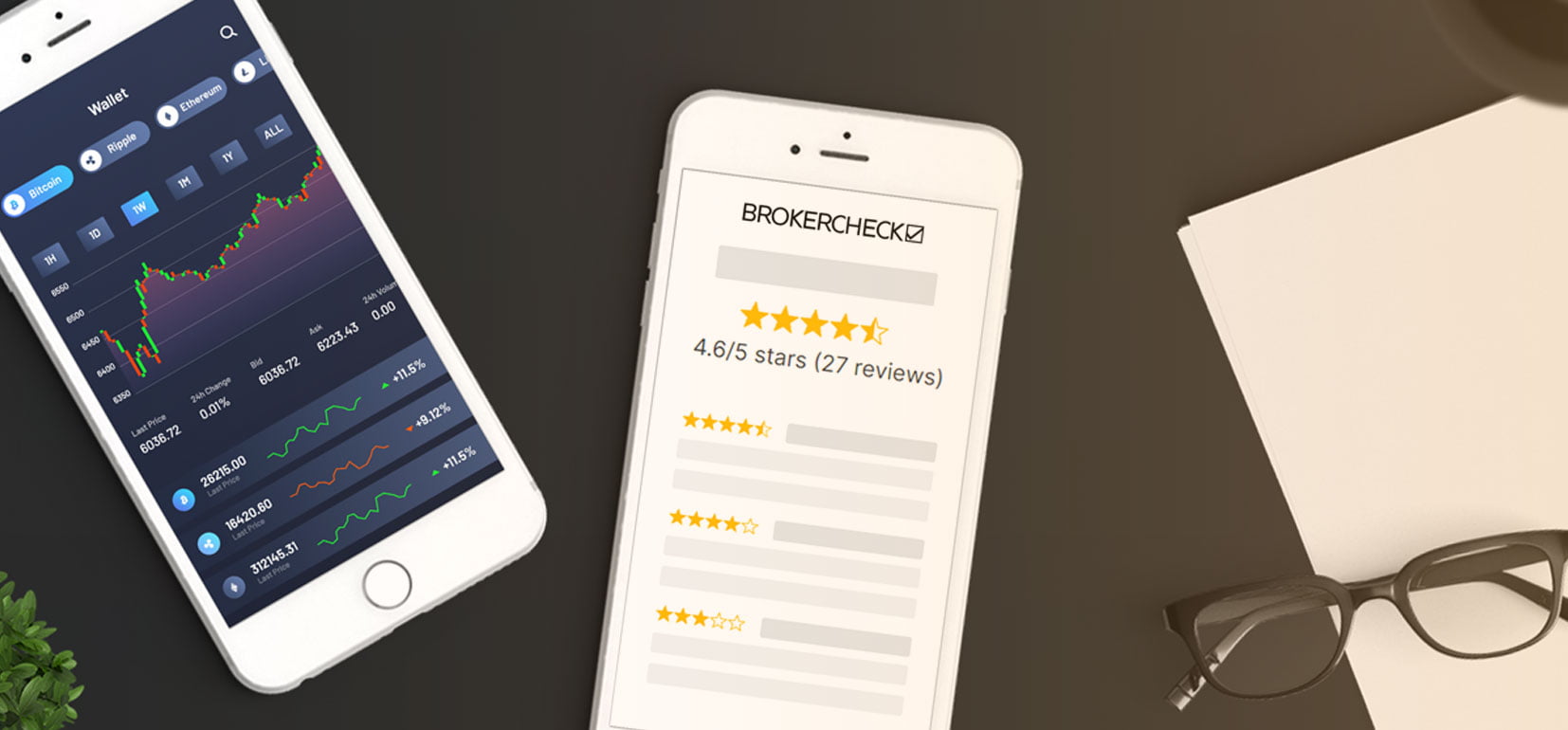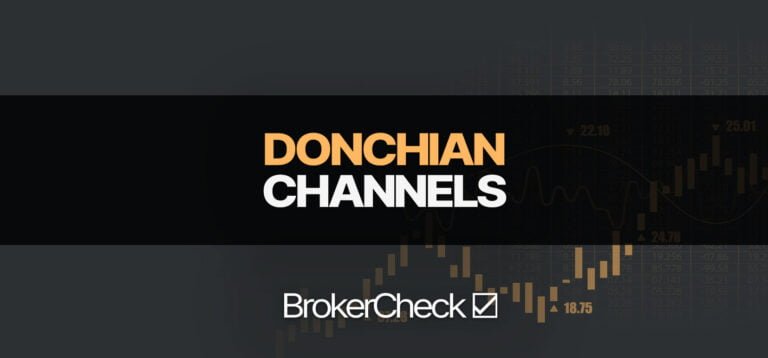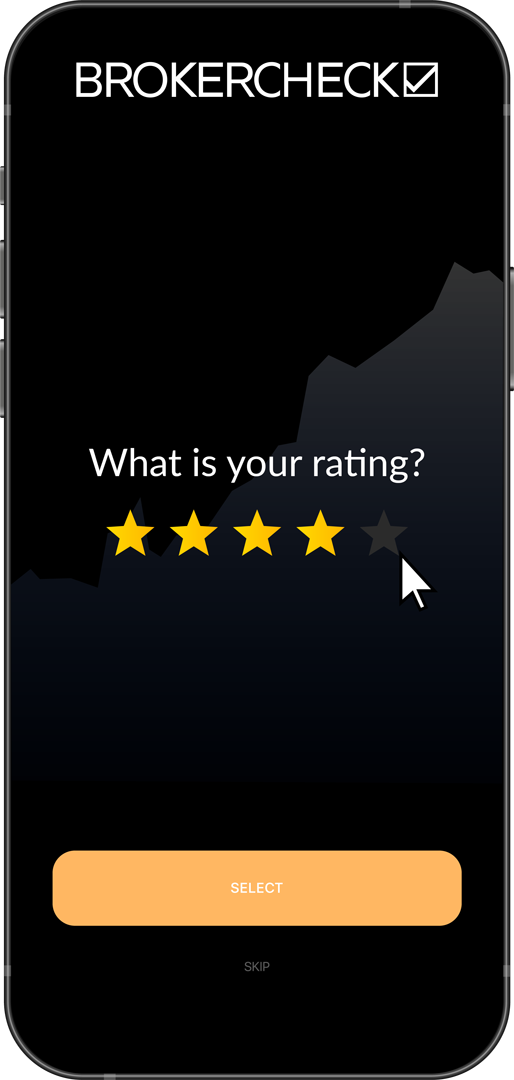1. Understanding Risk Management in Trading
In the world of trading, the concept of risk management is as vital as it is complex. It’s the invisible safety net that can mean the difference between soaring profits and catastrophic losses. At its core, risk management is about understanding the potential downsides of a trade and taking proactive steps to mitigate them.
Firstly, a sound risk management strategy begins with diversification. This is the practice of spreading your investments across a variety of assets to reduce exposure to any single one. It’s the old adage of not putting all your eggs in one basket, translated into trading terms.
Secondly, stop-loss orders are a trader’s best friend. These are instructions set with your broker to sell an asset when it reaches a certain price. They are designed to limit an investor’s loss on a security position.
Thirdly, position sizing is another crucial element. This involves deciding how much of your portfolio to risk on any single trade. A common rule of thumb is to risk no more than 1-2% of your portfolio on a single trade.
Continuous learning is another key aspect. The markets are constantly evolving, and so should your knowledge. Stay updated with market trends, understand the implications of news events, and always be ready to adapt your strategy.
Finally, remember that risk management isn’t about completely avoiding risk. It’s about understanding it, controlling it, and turning it to your advantage. After all, in the words of the ancient Greek philosopher Herodotus, “He who risks nothing, gains nothing“.
1.1. Definition of Risk Management
Risk Management, a term that reverberates through the trading halls and digital platforms alike, is a cornerstone in the world of finance. It is the systematic process of identifying, assessing, and controlling threats to an organization’s capital and earnings. These threats, or risks, could stem from a wide variety of sources, including financial uncertainty, legal liabilities, strategic management errors, accidents, and natural disasters.
Risk Management is not merely an isolated task, but a continuous and evolving strategy that permeates every level of a trading operation. It’s an art, a science, and a discipline that demands a comprehensive understanding of market dynamics, a keen eye for potential pitfalls, and the courage to make crucial decisions in the face of uncertainty.
In the tumultuous seas of the trading world, Risk Management is your compass and your anchor. It guides you through stormy markets, helps you navigate uncharted territories, and keeps you grounded when the winds of fortune blow in your favor. It’s not about avoiding risk altogether – that’s an impossibility in trading. Instead, it’s about understanding the nature of risk, anticipating its potential impact, and taking calculated steps to mitigate its effects.
Risk Management is the invisible hand that steers the ship of trading. It’s the unseen force that transforms a reckless gambler into a strategic trader, a chaotic market into a field of opportunity, and a potential loss into a learning experience. It is, in essence, the key to sustainable trading success.
From the smallest retail traders to the largest investment banks, Risk Management is the shared language of success and survival in the financial markets. It’s the thread that weaves the fabric of trading strategies, the foundation upon which profitable portfolios are built, and the lifeline that keeps traders afloat in the turbulent waters of the market.
The beauty of Risk Management lies not in its complexity, but in its simplicity. It’s not about predicting the future, but preparing for it. It’s not about controlling the market, but controlling your response to it. It’s about making the right decisions, at the right time, for the right reasons. And that, dear traders, is the essence of successful trading.
1.2. Importance of Risk Management for Traders
Trading is an exhilarating journey, filled with highs, lows, and the thrill of potential profit. But it’s not just about the thrill. It’s about strategy, precision, and above all, risk management. In the fast-paced world of trading, the ability to manage risk effectively can be the difference between a successful trade and a disastrous one.
Risk management is not just a safety net; it’s a crucial part of your trading strategy. It’s about protecting your capital and ensuring you have enough to trade another day. It’s about understanding the market, knowing your limits, and making informed decisions based on a clear evaluation of potential risk and reward. It’s about balancing the desire for profit with the necessity of limiting potential losses.
Effective risk management involves a range of strategies and techniques, from setting stop-loss orders to diversifying your portfolio. It’s about understanding the market conditions, analyzing trends, and making informed decisions based on this knowledge. It’s about being proactive, not reactive, and making decisions based on logic, not emotion.
Risk management is not just about avoiding risk; it’s about managing it. It’s about understanding that risk is a part of trading and finding ways to mitigate it while still pursuing profit. It’s about making smart decisions, not just safe ones.
Remember, risk management is not an optional extra; it’s an essential part of successful trading. So, whether you’re a seasoned trader or just starting, make sure risk management is at the heart of your trading strategy. Because in trading, as in life, it’s not just about the destination; it’s about the journey. And the journey is a lot smoother when you know how to manage risk.
1.3. Common Misconceptions about Risk Management
Dispelling the fog of misconceptions surrounding risk management is crucial for traders looking to safeguard their investments. One of the most common fallacies is the belief that risk management is synonymous with risk avoidance. In reality, risk management is about understanding and mitigating potential threats, not eliminating them entirely. The financial markets are inherently risky, and avoiding risks altogether would mean missing out on potential opportunities for profit.
Another widespread misconception is that risk management is only for large, institutional investors. This couldn’t be further from the truth. Whether you’re a seasoned Wall Street trader or a beginner dipping your toes in the market, a solid risk management strategy is essential to protect your capital and maximize your returns.
Many traders also fall into the trap of believing that a single, infallible risk management strategy exists. The reality is that risk management is not a one-size-fits-all approach. It is a dynamic process that should be tailored to individual trading goals, market conditions, and risk tolerance.
A common mistake is to underestimate the importance of emotional control in risk management. Emotions can cloud judgment and lead to impulsive decisions, so it’s vital to maintain a cool head and stick to your strategy, even in volatile market conditions.
Finally, some traders believe that risk management is a guarantee against losses. While a solid risk management strategy can significantly reduce the likelihood of substantial losses, it does not eliminate the possibility entirely. Remember, in trading, no reward comes without some degree of risk.
2. Key Elements of Effective Risk Management
Understanding your risk tolerance is the first critical element in devising an effective risk management strategy. This involves an honest assessment of your financial situation and your emotional comfort level with potential losses. It’s about striking a balance between the risk you’re willing to take and the potential return on your investment.
The second element is diversification. This age-old strategy involves spreading your investments across a variety of assets to reduce exposure to any single one. By having a mix of stocks, bonds, and other types of investments, you can potentially mitigate the adverse effects of a poor performing asset on your overall portfolio.
Regular monitoring and adjustment of your investment portfolio is the third key element. The market is dynamic, and so should be your investment strategy. Regular reviews will help you identify any changes in market conditions and adjust your portfolio accordingly to maintain your desired level of risk and return.
The fourth element is having a contingency plan. This involves having a predefined action plan in case of significant market downturns or personal financial emergencies. This could range from maintaining an emergency fund, having adequate insurance coverage, or setting stop-loss orders for your investments.
Lastly, education and staying informed is a crucial element of risk management. The more you understand about the market and your investments, the better equipped you are to make informed decisions. This not only includes understanding the basic principles of investing but also staying abreast with the latest market trends and economic news.
These five elements form the cornerstone of an effective risk management strategy. By understanding your risk tolerance, diversifying your investments, regularly monitoring and adjusting your portfolio, having a contingency plan, and staying informed, you can navigate the market with confidence and mitigate potential losses.
2.1. Risk Assessment
Understanding the landscape of risk is a crucial first step in any trading journey. Just as a sailor wouldn’t set sail without assessing the weather, a trader shouldn’t dive into the market without a comprehensive risk assessment. This process involves a deep dive into the potential hazards that may lurk beneath the surface of your trading strategies.
Identifying potential risks is the first step in this process. This could be anything from market volatility, economic changes, to the stability of your chosen trading platform. It’s important to cast a wide net in this stage – no potential risk is too small to consider.
Next, you’ll need to analyze these risks. This involves determining the likelihood of each risk occurring, and the potential impact it could have on your trading. This step will require some research, but it is time well spent. By understanding the potential impact of each risk, you can prioritize your risk management strategies effectively.
Once you’ve identified and analyzed your risks, it’s time to evaluate them. This involves making decisions about which risks to accept, which to avoid, and which to mitigate. Remember, not all risks are created equal. Some may be worth taking if the potential reward is high enough.
Finally, monitoring your risks is an ongoing process. The market is constantly changing, and new risks can emerge at any time. Regularly reviewing your risk assessment will ensure you stay one step ahead of the game.
Risk assessment is not a one-time task, but an ongoing process that requires diligence and critical thinking. By regularly assessing, analyzing, evaluating, and monitoring your risks, you can navigate the turbulent seas of trading with confidence. Remember, a successful trader is not one who avoids risk, but one who understands it.
2.2. Risk Control
In the volatile world of trading, risk control stands as the beacon that guides your investment ship through stormy market waters. It is the compass that helps you navigate the unpredictable currents of market fluctuations, safeguarding your capital from the potential hazards that lurk beneath the surface.
It’s essential to understand that risk control is not about completely eliminating risk. That’s an impossible task. Instead, it’s about managing risk, keeping it within acceptable boundaries while still allowing room for profitable opportunities.
Setting stop-loss orders is a common risk control strategy. This mechanism automatically sells a security when its price drops to a predetermined level, effectively putting a cap on potential losses. However, while stop-loss orders can limit losses, they can also limit profits if not used judiciously.
Diversification is another key risk control strategy. Spreading your investments across a variety of assets can help mitigate the impact of a poor performing security on your overall portfolio. But remember, diversification is not just about owning different assets; it’s about owning assets that don’t move in tandem.
Position sizing is yet another crucial aspect of risk control. It involves determining the amount of capital to invest in a particular trade, based on the risk associated with that trade. By limiting the amount invested in riskier trades, position sizing can help protect your portfolio from significant losses.
Risk control is not a one-size-fits-all strategy. It requires constant monitoring and adjustment based on market conditions, investment goals, and individual risk tolerance. But with careful planning and disciplined execution, risk control can significantly enhance your trading success.
2.3. Risk Monitoring and Adjustment
In the dynamic world of trading, constant vigilance is not just a virtue, but a necessity. Every seasoned trader knows that the market is as unpredictable as it is profitable. This makes risk monitoring a critical component of any successful trading strategy.
Risk monitoring is the process of regularly reviewing and assessing your trading portfolio to ensure your risk level aligns with your financial goals and risk tolerance. It requires keeping a close eye on the market trends, economic indicators, and political events that could potentially impact your investments.
But monitoring alone is not enough. It’s equally important to adjust your strategies based on the insights gained from your risk monitoring activities. This could mean diversifying your portfolio, rebalancing your investments, or even exiting certain positions to mitigate potential losses.
The key is to be proactive, not reactive. Don’t wait for a market downturn to start thinking about risk management. Instead, make risk monitoring and adjustment an integral part of your trading routine. This way, you can not only protect your investments but also seize new opportunities that come your way.
Here are a few strategies to help you get started:
- Set clear risk limits: Determine how much risk you are willing to take on and stick to it. This could be a percentage of your total portfolio or a specific dollar amount.
- Use stop-loss orders: These are designed to limit an investor’s loss on a position in a security. It’s a great tool to protect your profits and limit your losses.
- Diversify your portfolio: Spread your investments across different asset classes to reduce the impact of any one investment’s poor performance.
- Stay informed: Keep up with market news and economic indicators. The more you know, the better you can anticipate and react to market changes.
Remember, risk management is not about avoiding risks, but managing them in a way that aligns with your financial goals and risk tolerance. So, keep monitoring, keep adjusting, and keep trading!
3. Risk Management Strategies for Traders
Understanding risk management is a crucial aspect for traders. It’s not just about making profitable trades, but also about protecting yourself from potential losses. With the right strategies, you can mitigate risks and maximize your profits.
Firstly, diversification is a tried and tested strategy. Don’t put all your eggs in one basket. Spread your investments across different asset classes and sectors. This can help you balance your portfolio and reduce the risk of a single investment ruining your portfolio.
Secondly, set a stop-loss order. This is a pre-determined level at which you will sell your investment to limit your loss. It’s a safety net that can prevent you from losing more than you can afford to.
Thirdly, position sizing is another effective strategy. It involves adjusting the amount of capital you invest in a single trade based on the risk associated with that trade. By investing less in high-risk trades and more in low-risk ones, you can manage your risk more effectively.
Lastly, continuous learning is a must. The market is dynamic and constantly changing. By keeping yourself updated with the latest trends, news, and strategies, you can make informed decisions and manage your risks better. Remember, risk management is not a one-time task but a continuous process.
In addition, using tools and software can further help in risk management. There are numerous trading platforms and software that provide advanced analytics, real-time data, and other features that can aid in risk management.
Risk management is not about avoiding risks but about understanding and managing them. By using these strategies, you can trade confidently and make the most of your investments.
3.1. Position Sizing
Position sizing is the cornerstone of solid risk management, a strategy that can make or break your trading career. It is the process of deciding how much of your capital to risk on any single trade. Position sizing is not a one-size-fits-all concept; it’s a dynamic strategy that should be tailored to your individual risk tolerance, trading style, and the specifics of the trade itself.
The key to effective position sizing is understanding the relationship between risk and reward. This involves calculating the potential profit and loss for each trade and making an informed decision about how much risk you’re willing to take on. Remember, the goal is not to win every trade, but to manage your risk effectively so that your winning trades outweigh your losing ones over time.
To calculate your position size, you’ll need to know your account size, the percentage of your account you’re willing to risk, and the size of your stop loss. Here’s a simple formula: Position Size = (Account Size x Risk Percentage) / Stop Loss. For example, if you have a $10,000 account and are willing to risk 2% per trade with a 50 pip stop loss, your position size would be $200 / 50 = 4 lots.
Position sizing is also about managing your emotions. Traders often fall into the trap of over-trading or taking on too much risk after a series of losses, in an attempt to “make back” lost money. This is a dangerous strategy that can lead to significant losses. By setting a fixed position size based on your risk tolerance, you can avoid this common pitfall and maintain a level head, even in the most volatile markets.
In addition to these basics, there are also advanced position sizing strategies such as martingale and anti-martingale. These involve increasing or decreasing your position size based on the outcome of previous trades. While these strategies can be profitable, they also carry a higher level of risk and should only be used by experienced traders.
Whether you’re a novice trader just starting out or a seasoned pro looking to fine-tune your strategy, understanding and implementing proper position sizing is crucial. It’s not about chasing profits or avoiding losses, but about managing risk and making informed decisions that align with your long-term trading goals.
3.2. Hedging
In the high-stakes world of trading, managing risk is not just a strategy—it’s a necessity. One of the most effective ways to do this is through hedging. At its core, hedging is the practice of making an investment to offset potential losses or gains that may be incurred by another investment. It’s like an insurance policy for your trades, providing a safety net against market fluctuations and unpredictable events.
The beauty of hedging lies in its versatility. Traders can hedge against a variety of risks, including interest rates, commodities, foreign exchange, and equities. The trick is to invest in two securities with negative correlations. For instance, if you’re concerned about a potential decline in the stock market, you could invest in a put option—a contract that gives you the right to sell a certain number of shares at a specified price within a specified time period. If the market does indeed decline, your losses on the stocks will be offset by gains on the put option.
However, it’s important to note that hedging isn’t a one-size-fits-all solution. Different strategies work for different scenarios, and the effectiveness of a hedge can vary depending on factors like timing, market conditions, and the nature of the underlying investments. That’s why it’s crucial to understand the risks and rewards associated with each hedge, and to continually monitor and adjust your strategy as needed.
One popular hedging strategy is the pair trade, which involves buying a long position in one stock and a short position in another. This strategy is based on the assumption that the two stocks will move in opposite directions, and it can be a powerful tool for mitigating risk—especially in volatile markets. Remember, the goal of hedging isn’t to eliminate risk entirely, but to manage it in a way that aligns with your individual trading objectives and risk tolerance.
In the end, successful hedging is as much an art as it is a science. It requires a deep understanding of the market, a keen eye for trends, and the ability to make informed decisions under pressure. But with careful planning, diligent research, and a little bit of luck, hedging can be a game-changer for your trading portfolio—helping you navigate the ups and downs of the market with confidence and control.
3.3. Using Trading Tools for Risk Management
In the realm of trading, risk management is an art that can be honed through the strategic use of trading tools. These tools, designed with precision and sophistication, serve as a trader’s compass, guiding them through the unpredictable currents of the financial markets.
Technical analysis tools, for instance, can be used to identify potential market trends and reversals, offering traders a glimpse into the future direction of asset prices. These tools include moving averages, Bollinger Bands, and Relative Strength Index (RSI), each providing unique insights into market dynamics.
Moreover, stop loss orders and take profit orders are essential trading tools that can automate the risk management process. A stop loss order automatically closes a trade when the price reaches a predetermined level, thus limiting potential losses. Conversely, a take profit order locks in profits by closing a trade when the price reaches a certain level in the trader’s favor.
The use of leverage is another critical trading tool for risk management. While it allows traders to maximize potential profits by trading with more capital than they have, it also amplifies potential losses. Therefore, it’s crucial to use leverage judiciously and in conjunction with other risk management tools.
Lastly, portfolio diversification is an essential strategy that can be facilitated by using trading tools. By spreading investments across a variety of assets, traders can mitigate the risks associated with any single asset’s performance.
In essence, trading tools offer a systematic approach to risk management, allowing traders to navigate the financial markets with confidence and control. However, it’s crucial to remember that these tools are not foolproof and should be used in conjunction with a comprehensive understanding of market dynamics and sound trading strategies.
4. Cultivating a Risk Management Mindset
Embracing risk management is not just about understanding the technicalities of trading. It’s about cultivating a mindset that sees risk as an integral part of the trading process. This involves a shift from perceiving risk as an enemy to be defeated to viewing it as a companion on your trading journey.
- Firstly, acknowledge that risk is inevitable in trading. No matter how well you’ve mastered the intricacies of the market, there will always be variables outside your control. The key is not to eliminate risk, but to manage it effectively.
- Secondly, don’t let fear of risk paralyze you. It’s easy to become overwhelmed by the uncertainties of trading. However, a successful trader knows how to balance caution with courage. Remember, risk can also bring opportunity.
- Thirdly, make risk management a routine. Incorporate it into your daily trading activities. This could mean setting stop-loss orders, diversifying your portfolio, or regularly reviewing and adjusting your trading strategies.
- Lastly, cultivate resilience. Even with the best risk management strategies, losses will occur. The ability to bounce back from these setbacks is what separates successful traders from the rest.
In essence, cultivating a risk management mindset is about accepting, managing, and learning from risk. It’s about seeing risk not as a threat, but as a tool for growth and success in the trading world.
4.1. Embracing Losses as Part of Trading
Embrace the reality of trading losses. Trading is not a linear journey to the top. It’s a rollercoaster ride with ups and downs, victories and setbacks. And it’s the setbacks, the losses, where the real lessons are learned.
Losses are not failures, but opportunities. They are stepping stones towards your ultimate goal – trading proficiency. When you experience a loss, don’t wallow in self-pity or let it affect your confidence. Instead, use it as a chance to improve your trading strategy. Analyze what went wrong, make necessary adjustments, and move forward with a renewed determination.
It’s crucial to keep emotions in check. Trading is a game of numbers and strategy, not emotions. Emotional decisions often lead to unnecessary risks and losses. Maintain a calm, objective perspective at all times, especially during a losing streak.
Implement a strict risk management strategy. This includes setting a stop-loss limit to automatically close out a position when a certain loss level is reached. It’s an effective way to limit potential losses and prevent a single bad trade from wiping out your entire account.
Never risk more than you can afford to lose. As a rule of thumb, never risk more than 1-2% of your trading capital on a single trade. This way, even if you have a string of losses, your trading capital will not be significantly depleted.
Always remember, trading is a marathon, not a sprint. It’s a long-term endeavor that requires patience, discipline, and continuous learning. Losses are just temporary setbacks on your journey to trading success. Embrace them, learn from them, and keep moving forward.
4.2. Prioritizing Risk Management over Profits
In the thrilling world of trading, it’s easy to get caught up in the pursuit of profits. However, the undervalued art of risk management often holds the key to long-term success. It’s an art that requires a deep understanding of the market, a keen sense of intuition, and above all, the courage to prioritize safety over immediate gains.
The trading market, volatile and unpredictable, is akin to a wild beast. It can reward you with unimaginable riches or leave you penniless in a matter of seconds. Herein lies the importance of risk management. It serves as a protective shield, a buffer that can soften the blow when the market turns against you. It’s not about avoiding risks, but about understanding and managing them effectively.
Risk management is a multifaceted discipline. It entails setting stop-loss orders to limit potential losses, diversifying your portfolio to spread risk, and constantly monitoring market trends. It also involves a careful analysis of your trading strategy and performance, identifying weaknesses and making necessary adjustments.
Profit is undoubtedly important, but it should never come at the cost of prudent risk management. A single reckless trade can wipe out months of hard-earned profits. On the other hand, a well-managed risk strategy can help you weather market storms and steadily grow your wealth. It’s a delicate balancing act, one that demands discipline, patience, and a clear-headed approach.
In the end, successful trading is not just about making profits, but about preserving your capital and surviving in the long run. It’s about understanding that the market is a marathon, not a sprint. It’s about recognizing that every trade carries risk, and that managing this risk is just as important, if not more so, than chasing profits. So, the next time you’re tempted to go for that high-risk, high-reward trade, remember: risk management should always be your top priority.
4.3. Consistent Application of Risk Management Practices
Consistency is the backbone of effective risk management. It’s not enough to have well-thought-out strategies in place; they must be applied consistently to truly mitigate risk. This means sticking to your plans, even when the market is fluctuating wildly, and not allowing emotions to dictate your decisions.
Discipline is key. It’s easy to deviate from your risk management strategies when you see potential for big profits, but this can often lead to substantial losses. Instead, focus on maintaining a steady approach, one that’s based on careful analysis and sound judgement.
Take a page from the book of successful traders who have weathered the storm of volatile markets. They don’t jump at every opportunity; instead, they stick to their strategies, applying them consistently to manage risk effectively.
- Regular Review: Risk management is not a one-time task. It requires regular review and adjustment. Market conditions change, and your strategies should evolve with them. Regularly reviewing your risk management practices allows you to identify any shortcomings and make necessary improvements.
- Stress Testing: This involves simulating worst-case scenarios to see how your strategies hold up. It’s a crucial part of risk management, allowing you to prepare for the worst while hoping for the best.
- Continuous Learning: The financial market is complex and constantly changing. Staying informed about market trends, new trading techniques, and regulatory changes can help you adapt your risk management strategies as needed.
Remember, the goal of risk management isn’t to eliminate risk entirely – that’s impossible. Instead, it’s about managing it effectively, reducing your potential losses, and increasing your chances of success. And that requires consistent application of your risk management practices.










